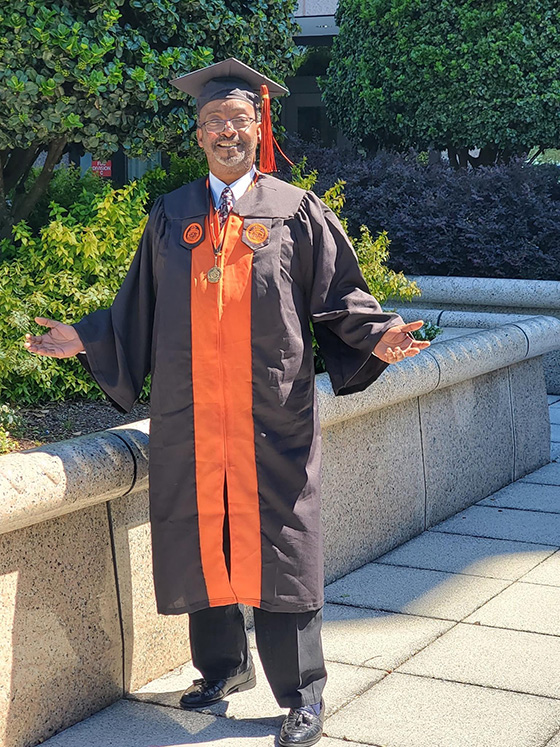Beyond the Headlines is an ongoing series of headline-responsive lesson plans from the Pulitzer Center. These lessons seek to support teachers and students in navigating information, emotion, and perspectives on major news headlines, and to provide critical underreported stories that help connect current events to our personal lives, local communities, and systemic global issues. Browse more lessons in this series here.
Objectives:
Students will be able to…
- Describe how Brittney Griner’s detention and subsequent release connects to local/global legal injustices
- Connect with the impacts of injustices in the legal system on a local and/or personal level
- Identify, process, and value their emotions in response to injustices in the legal system
- Take action on injustices in the legal system by exercising their research, writing, and/or presentation skills
Warm-up:
1. What does freedom mean to you? Make a mind map (find templates here), or discuss with a partner.
2. Share some of your answers with the class.
- What ideas do you share with many of your classmates?
- How do your ideas differ?
- Reflect to yourself, or share if you are comfortable: How do you think your experiences might inform your idea of freedom?
3. In this lesson, we are going to hear the stories of people recently released from prison. One recent high-profile case of a person released from prison is that of Brittney Griner.
- What do you know about Brittney Griner and her detention in Russia?
- Watch this short video clip, captured by Russian state media, speaking with Griner before takeoff on her plane flight back to the U.S.
- Discuss: What emotions do you feel watching this video? What emotions do you think Griner might be feeling, and why?
4. Watch the video from the Facing Life reporting project below. In the video, Travielle Pope, who was incarcerated for 26 years before he was released in 2018, describes the feeling of being free.
Discuss:
- What emotions do you feel watching this video? What emotions do you think Pope might be feeling, and why?
- How do these videos expand or reinforce your ideas about what freedom means?
Introducing the Lesson:
In August 2022, WNBA star Brittney Griner was sentenced to nine years in a Russian penal colony on charges of drug possession and smuggling after she was found with vape cartridges and cannabis oil in her luggage. Griner’s detention coincided with the Russian invasion of Ukraine, and has been used as a geopolitical “bargaining opportunity” during a time of increased tension with the United States. Her celebrity, and her detention as a queer Black woman in the context of rising anti-LGBTQIA+ legislation in Russia, have heightened the urgency of securing Griner’s release. While the Kremlin has denied that her case is politically motivated, U.S. Secretary of State Anthony Blinken has denounced her trial as “a sham” and the State Department classified her as “unlawfully detained.” After 294 days, Griner was released in a prisoner swap with Russian arms dealer Viktor Bout, who was ten years into a 25-year sentence in a U.S. prison.
In these early days following her return, Griner is receiving support from her family, team, and medical professionals. Her homecoming is cause for celebration. At the same time, her detention casts a spotlight on how harsh sentencing, an overreliance on punishment, and barriers to reentry continue to affect millions of people in the United States. The U.S. incarcerates people at a higher rate than any other country in the world, and typically hands out longer sentences than the legal systems of other Western democracies. After release, formerly incarcerated people in the U.S. continue to face systemic barriers to accessing basic resources, services, and opportunities.
This lesson plan will introduce students to the stories of people who have been incarcerated in U.S. prisons. By evaluating these stories, students will reflect on the long-term effects of punitive legal policies on individuals and communities. Through this exploration, students will be able to connect Brittney Griner’s story to the global issues of punitive legal policies and barriers to reentry, and how injustices in the legal system show up in their own communities.
Pause to Process:
After introducing the lesson to students, pause to check in with their emotions. Depending on established classroom norms and student comfort levels, students can reflect privately, or share in a small group or whole group format. Consider giving students the option to complete the exercise independently.
- How does learning and talking about this issue make you feel? Try to find at least three descriptive words.
- Can you identify what is making you feel that way? Think about…
- Specific details of the issue
- How the issue does / does not relate to you and people you care about
Educator’s note: Let students know that there are no right or wrong emotional responses to stories and current events. Students may feel sad, angry, or afraid when learning about injustices. They may feel numb because they encounter bad news so often, or because they don’t yet feel a connection to the story. They may feel excited or happy. The point of this exercise is for individuals to identify their feelings, recognize that they have value, and be mindful of them as they begin to dig deeper into this issue.
Going Beyond the Headlines:
Have students jigsaw the stories below and then present a summary of the story they explored. Alternatively, teachers can select one story to explore as a class.
While exploring their story individually or in small groups, students should keep track of the following in writing:
- What systemic barriers do the people in this story face as a result of their past incarceration?
- What social and emotional impacts do the people in this story deal with as a result of their past incarceration?
| Story | Description | Content Notes |
|---|---|---|
| “He Stole a Rug and a Car. Why Did He Spend 25 Years Bouncing Between Prison and Parole?” by Jaeah Lee and Brian Frank | This text and photo story takes the reader through one man’s journey in and out of juvenile detention, jail, and prison over decades, and illuminates how people can become caught in cycles of incarceration. The story provides context for the history and development of the parole system. | Text contains references to violence and drug use |
| “Life After Life in California’s Prisons” by Pendarvis Harshaw and Brandon Tauszik *Find more, longer profiles from this multimedia series here. Teachers should preview these profiles before sharing with students to identify content notes. |
This story profiles several people recently released early while serving life sentences as a result of new legislation in California. In text and short videos, each person describes some of their experiences following release. | Text contains references to violence and sexual assault |
| “After Lockdown, Challenges Remain for North Carolina's Ex-Offenders” by Herbert L. White | This text story explores barriers to accessing opportunity following a period of incarceration in North Carolina through both statistics and one man’s story. | None |
Discussion Questions:
After exploring the news story, students discuss:
Understanding the story:
- What is one piece of information in the news story you explored that you already knew?
- What is one piece of information in the news story that surprised or interested you?
- Did you have any questions while exploring the story? What more do you want to know?
Connecting with the story:
- While mass incarceration and barriers to reentry are national problems, states vary widely in their specific policies. How do punitive legal policies connect to your community? If you’re not sure, do some research!
- In this story, how does the issue of punitive legal policy intersect with other global issues, such as racial justice, housing, and migration?
- How can you connect with the story you read on a personal level? For example:
- Do you share experiences with any of the people in this story, or do people close to you share those experiences?
- Have you experienced feelings similar to those the people in this story describe?
Evaluating the story:
- How do you think exploring this story can be helpful in contextualizing Brittney Griner’s detainment in Russia and her release?
- How did the story you read highlight an underreported story? For example:
- Were the voices of people who are often not included in news coverage centered?
- Did the story explore the root causes of an event, or its long-term impacts?
- Did you learn about an issue or a place you didn’t know much about before?
Acting on the story:
- What stories do you think might be going underreported in the current coverage of Brittney Griner’s detainment and return and the underlying issue of injustices in legal systems around the world? What can we do to seek out those stories?
- How are people working to resist and find solutions to injustices in the legal system? (If you don’t know, do some research!)
- What do you think you and your classmates can do to be part of the solution to injustices in the legal system? (After brainstorming, check out the extension activities below for additional ideas.)
Extension Activities:
Option 1. Interview a Leader in the Movement Against Punitive Legal Policies
Do some research and identify a leader, changemaker, activist, or organization in your city, state, or country. To identify a person or organization, it may be helpful to narrow your focus to a specific issue that interests you, such as sentencing policy, reentry services, or decriminalization.
If possible, reach out and interview this person or a representative of the organization. Put together a presentation to share with the class. Address the following in your presentation:
- Overview of the individual or organization (Mission, goals, etc.)
- What issues, solutions, actions, or policies do they champion or support?
- How might we support their work in our everyday lives?
Click here to watch a short video with tips on how to conduct an interview with journalist Natasha S. Alford, or here for a full lesson on interview skills.
Option 2. Create a Public Service Announcement (PSA)
Public Service Announcements (PSA) are a great way to raise awareness and share information. Take some inspiration from individuals and groups who campaigned to ensure Brittney Griner’s detention stayed in the national spotlight, and create a PSA that highlights injustice in the legal system in your community.
Your PSA should provide information about a specific injustice in the legal system in your city, state, or country. It should also suggest an action people who see the PSA should take, such as calling their representative, donating to an organization, volunteering their time, or sharing information more widely.
To create your PSA, you can use a graphic platform such as Canva, a video platform such as Flip, or an audiovisual recording feature such as Microsoft PowerPoint.
Option 3. What Does Freedom Mean to You?
Return to your mind map or warm-up reflections, in which you began describing what freedom means to you. Expand on your reflection in a journal entry, addressing the following questions:
- What does freedom mean to you?
- What helps you access freedom?
- What keeps you from being as free as you want to be?
- What would need to happen for you to access more freedom than you have right now?
- How might you be able to share some of your current or future freedoms with others?













